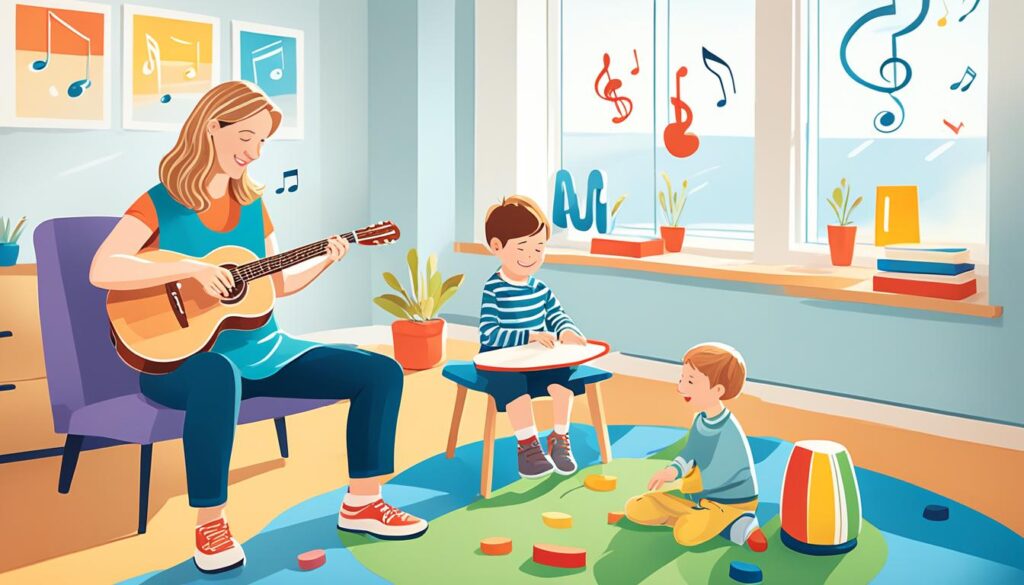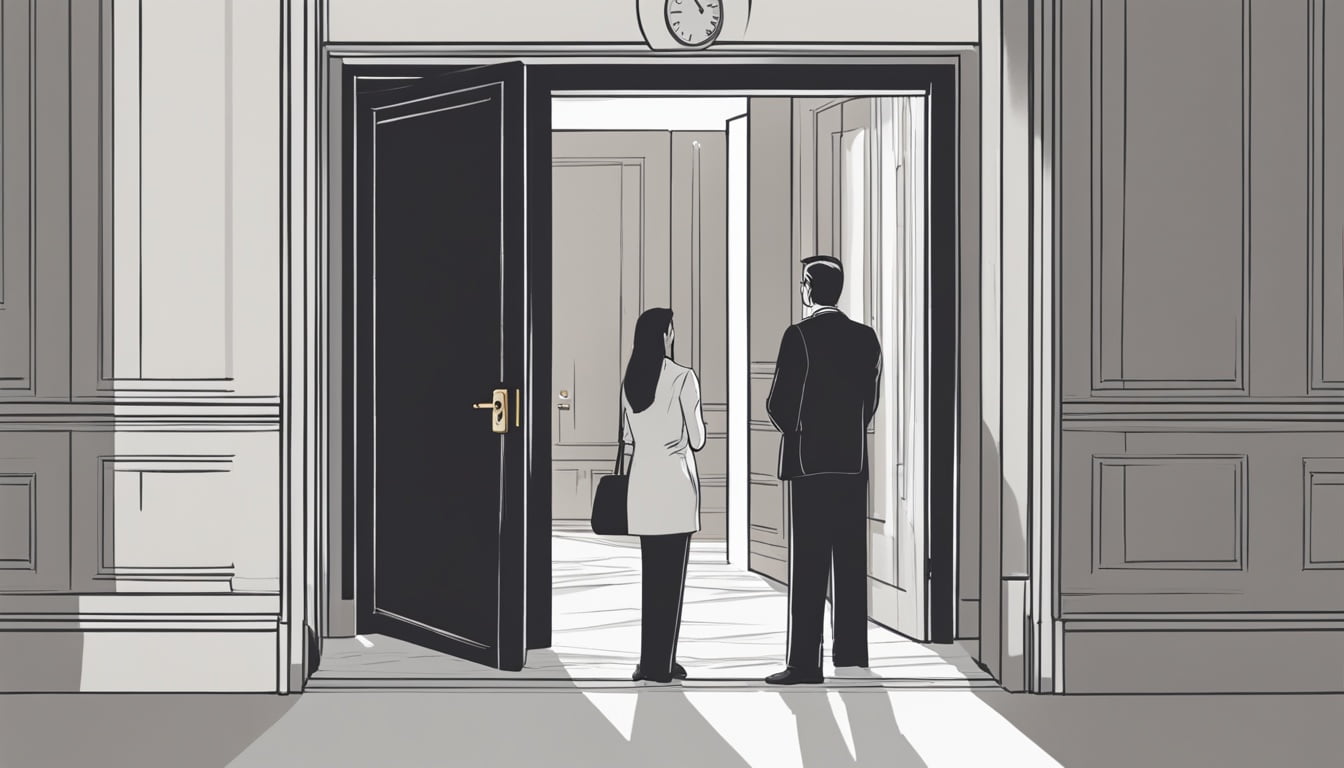Have you ever noticed how a song can change your mood in seconds?
Music can make us feel many things, like happiness or sadness. It’s a strong tool for healing and staying well. Music therapy uses music to help with mental, emotional, and physical health. This article will look at the many types of music therapy and how they can improve your health.
There are many types of music therapy designed to meet different needs. Whether someone is recovering from a stroke, dealing with anxiety, or managing autism, there’s a form of music therapy that can help.
In this blog, we will explore the different types of music therapy, how each one works, and how they can help improve your life or the life of someone you care about.
Table of Contents
ToggleWhat is Music Therapy?
Music therapy is a clinical, evidence-based treatment that uses music to help people achieve specific health goals. A trained music therapist works with individuals or groups, using music in different ways based on the person’s needs.
It has roots in Ancient Greece, where music was used to connect the body and mind.
There are many types of music therapy, and each one uses different methods to help people feel better mentally, physically, and emotionally.
The History of Music Therapy
Music therapy has been used for thousands of years. Ancient Greeks used music to treat mental illness. In the early 19th century, music’s link to health became a focus of study. By 1914, music therapy was gaining attention. Surgeons found that music helped patients feel less anxious before surgery.
In modern times, it became more structured during World War I and II, when musicians played for soldiers in hospitals. The patients showed better recovery, and doctors took notice.
Today, certified music therapists use structured methods backed by science. The American Music Therapy Association (AMTA) was formed in 1998 to set professional standards.
The Benefits of Music Therapy
Before we talk about different types of music therapy, let’s understand why it helps:
- Reduces anxiety and stress
- Helps with pain management
- Supports memory and speech after brain injuries
- Improves motor skills in physical therapy
- Aids emotional expression in trauma patients
- Music therapy benefits children with autism
In one study, 68% of patients with chronic illness said music therapy reduced their pain.
Music therapy can help with anxiety, depression, PTSD, and neurological diseases like Alzheimer’s. It also aids children in learning, behavior, and managing emotions.
If you’re looking for relief or just want to improve your well-being, music therapy could be right for you. With a qualified music therapist, you can use music to boost your health in many ways.
Active vs. Receptive Music Therapy Interventions
In music therapy, there are two main ways therapists work: active and receptive music therapy. Each has its own benefits and goals. Knowing the differences can help you pick the right approach for you or your clients.
| Type | Description | Example Activity |
|---|---|---|
| Active | The person takes part in making music | Singing, drumming, playing guitar |
| Receptive | The person listens to music selected by a therapist | Guided music listening |
- Active music therapy means the client makes music, plays an instrument, or learns to play. It boosts self-expression, confidence, and helps develop new skills. Making music can be a powerful way to grow and heal.
- Receptive music therapy is more passive. Clients listen to music and talk about it. The therapist picks a song and the client might analyze lyrics, feel the emotions, or see pictures in their mind. This helps people understand their feelings, become more aware, and find ways to deal with tough times.
Both active and receptive music therapy interventions have their own strengths. The choice depends on what the person needs, likes, and the therapy’s goals. Using both methods together can give a full music therapy experience that meets the client’s many needs.
1. Guided Imagery and Music Therapy
The Bonny method of guided imagery and music (GIM) is a special way to explore your feelings and get creative insights.
This method works by blending music with a person’s inner thoughts and pictures in their mind. During a session, the person lies down in a relaxed position. The music therapist carefully chooses and plays specific music that can help the person connect with their emotions. As the music plays, the person shares the images or memories that come into their mind.
This process helps the brain move into a more relaxed, open state. It allows feelings, thoughts, or memories to come forward, especially those that might be hard to express with words. By talking about these mental images during or after the session, the person can gain new understanding about themselves.
How it helps:
- Calms the mind and body, lowering stress and anxiety
- Helps people understand and heal from emotional pain or trauma
- Boosts mental clarity, imagination, and problem-solving
- Supports therapy for PTSD, depression, and chronic stress
Guided imagery is one of the deepest types of music therapy because it reaches the parts of the mind where many strong emotions live.
This therapy is great for dealing with mental health issues like PTSD, grief, and stress. It uses music and imagination to help you see your inner world. This can lead to big changes in how you see yourself and the world.

If you want to know yourself better or help others, the Bonny method of guided imagery and music therapy is a great choice. It’s a unique way to improve your mental and emotional health.
2. Analytical Music Therapy
Analytical music therapy (AMT) is a special way to look into the human mind. It uses music to help you understand yourself, your relationships, and your connection to music.
This is a talk-based therapy. The patient and therapist make music together, then talk about the thoughts and feelings that came up.
What happens during a session:
- Client plays music freely with instruments
- Therapist joins in with musical replies
- After playing, they talk about the emotions or ideas that appeared
Applications of Analytical Music Therapy
Analytical music therapy is one of the most interactive types of music therapy. It works by helping people give shape to feelings that are difficult to explain. Making music together creates a safe space where hidden emotions can rise to the surface.
Once expressed through sound, these emotions can be discussed with the therapist. This connection between music and words helps people understand their behavior, process trauma, and feel emotionally stronger.
Over time, it can lead to better mental health and deeper self-awareness. It’s often used for emotional disorders, especially when talking alone is not enough.
This type is helpful in:
- Treating depression
- Reducing anxiety
- Helping children express feelings
It’s one of the best types of music therapy for emotional awareness.
It helps people with emotional, psychological, and relationship issues. If you’re facing anxiety, depression, relationship problems, or just want to grow, this therapy can be deeply helpful.
3. Neurologic Music Therapy
Neurologic music therapy (NMT) is a special type of music therapy that helps people with brain and nerve problems. It works by using rhythm and sound to retrain the brain. When someone listens to or plays music in a structured way, it activates parts of the brain linked to movement, speech, and memory. Over time, this can help the brain form new connections, especially after injury.
For example, after a stroke, walking or talking may become hard. But with NMT, music patterns can guide the brain to relearn these tasks step by step. In Parkinson’s disease, rhythm can help improve balance and walking. For children with autism or those with developmental delays, NMT improves communication and focus.
Common uses include:
- Stroke recovery
- Parkinson’s disease
- Traumatic brain injury (TBI)
- Autism and developmental delays
In one study, NMT helped stroke patients walk 50% faster. It’s one of the most powerful types of music therapy for brain recovery.
4. Nordoff-Robbins Music Therapy
Nordoff-Robbins music therapy, also known as creative music therapy, helps people express themselves through music. Paul Nordoff and Clive Robbins created this therapy. They worked with people who had developmental and emotional challenges.
This therapy works well with kids, teens, and adults on the autism spectrum. It also helps those with developmental disabilities and emotional issues. Nordoff-Robbins music therapists help clients find their voice and connect with others through music.
It’s one of the interactive types of music therapy that builds confidence and communication.
The Origins of Nordoff-Robbins Therapy
Nordoff and Robbins spent nearly two decades studying music’s impact on their clients. They developed the Nordoff-Robbins method. This method means the therapist plays music with the client, creating spontaneous musical experiences.
This therapy believes everyone has a musical side. It helps with self-expression, social skills, and well-being. Clients use drums and cymbals to make music together with therapists.

5. Community Music Therapy
Community music therapy brings people together to make a difference through music. It’s different from one-on-one sessions. The aim is to improve life for groups, not just one person.
This method is used in many places like schools, hospitals, and community centers. It helps people feel better by making music together. This way, everyone’s life gets better.
The Goals of Community Music Therapy
The main goals are:
- Promoting social inclusion and community engagement
- Enhancing group cohesion and interpersonal connections
- Empowering individuals and communities to create positive change
- Improving overall quality of life and well-being for participants
It’s different from traditional music therapy. It focuses on the group’s experience and music’s power in groups. With a music therapist, people share music to build a stronger community and feel better.
If you want a more connected community or to enjoy music therapy with others, try community music therapy. It’s a powerful way to improve your life and well-being.
6. Orff Music Therapy
Orff music therapy combines music with movement, speech, and drama. It was created by Gertrude Orff, a famous composer and educator. This therapy is great for schools, helping kids with delays or disabilities to express themselves and be creative.
The Orff-Schulwerk approach says music, movement, and language work together. By using them together, people can get better at speaking, making friends, moving, and hearing. It’s really good for those who find regular music therapy hard.
Orff music therapy includes many activities, like:
- Improvising with percussion instruments
- Singing and chanting
- Dancing and moving to the music
- Storytelling and dramatic play
These fun activities help people connect more with music. They also help them express themselves and grow personally.
If you’re a parent, teacher, or healthcare worker, using Orff music therapy can really help. It’s a great way to support people with different needs and abilities.
Types of music therapy
Here is a table to help understand the different types of music therapy at a glance:
| Type | Main Use Case | Active or Receptive | Target Group |
| Analytical Music Therapy | Emotional exploration | Active | Teens, adults |
| Guided Imagery | Deep emotional healing | Receptive | Adults, trauma patients |
| Neurologic Music Therapy | Brain and nerve function | Active | Stroke, TBI, Parkinson’s |
| Nordoff-Robbins | Communication and interaction | Active | Children with autism |
| Orff | Creativity and physical expression | Active | Children with disabilities |
| Community | Social bonding, support | Both | Groups, marginalized people |
How to Know Which Type is Right for You?
Choosing the right types of music therapy depends on your needs.
- If you’re recovering from a stroke, neurologic music therapy may help.
- If you have emotional trauma, guided imagery or analytical therapy might work better.
- For kids with special needs, Orff or Nordoff-Robbins therapy is often used.
A certified music therapist will guide you based on your goals and health needs.
Dr. Chandril Chugh’s Final Words on Music Therapy
Music can be more than just a hobby. It can heal. If you or someone you love is facing emotional, mental, or physical challenges, music therapy may be a gentle, effective support.
With so many types of music therapy, it’s important to choose the one that fits your unique situation. You can choose from active music-making, listening, or community music experiences.
As you finish this article, remember that everyone’s path to wellness is different. Music therapy can help you reach your full potential and connect more deeply with yourself and others. Start this journey and see how music therapy can change your life.
FAQ
What is music therapy?
Music therapy is a healthcare profession. It involves a music therapist creating sessions with specific goals. These goals aim to improve mental, emotional, and physical health.
What are the benefits of music therapy?
Music therapy can help with anxiety, depression, and PTSD. It also aids in managing neurological diseases like Alzheimer’s. Plus, it supports children’s learning, behavior, and emotional control.
What are the different types of music therapy?
There are two main types of music therapy. Active therapy lets clients create music or learn an instrument. Receptive therapy involves listening to music and discussing it to process emotions.
What is the Bonny method of guided imagery and music therapy?
The Bonny method uses classical music and imagery for personal growth and psychological issues. It helps clients uncover hidden emotions and gain creative insights by exploring their unconscious mind.
What is analytical music therapy?
Analytical music therapy explores the client’s relationships with themselves, others, and music. Clients may sing or play an instrument to express their thoughts. This helps them reflect on their unconscious feelings with the therapist.
What is neurologic music therapy?
Neurologic music therapy helps with cognitive, sensory, and motor issues from neurological diseases or injuries. It’s based on research showing music stimulates the brain and promotes brain flexibility.
What is Nordoff-Robbins music therapy?
Nordoff-Robbins music therapy is an improvisational approach. Therapists and clients play instruments like drums or cymbals. It aims to help clients express themselves and improve social skills.
What is community music therapy?
Community music therapy focuses on improving life in groups through music. It aims for a better quality of life in community settings rather than just helping one person.
What is Orff music therapy?
Orff music therapy combines music with movement, speech, and sometimes drama. It’s designed to enhance language skills, social abilities, motor skills, and hearing. It helps children with developmental delays and disabilities.
Source Links

Dr Chandril Chugh
Dr. Chandril Chugh, a renowned American Board-Certified Neurologist, is just a click away. With years of global experience, he offers trusted neurological guidance online.
→ Book a consultation to discover which remedies suit your needs best.




